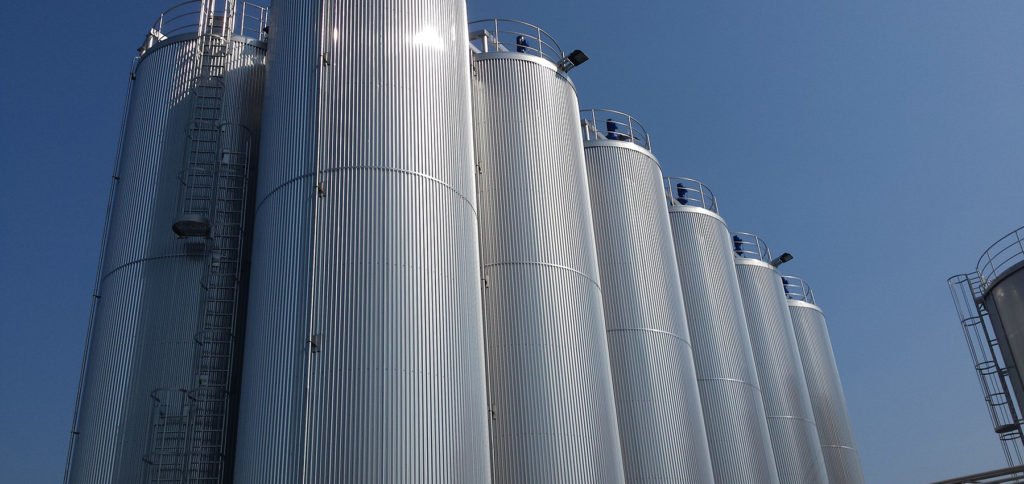Essential hygiene considerations for storage tanks

Everyone knows that milk and dairy products provide the ideal breeding ground for microorganisms. As such, the processing of milk is subject to extremely strict hygiene requirements.
High hygiene standards are required from the outset at farms and must continue to be met when milk is acquired as well as throughout the entire time it spends at dairies. Products must also be transported to consumers in a continuous, uninterrupted cold chain to not undermine the efforts of milk processors in achieving maximum product safety.
Batching – the storage of milk in tanks during individual process steps – plays a key role in terms of hygiene. But what features do tanks need to have to ensure they can reliably fulfill their task? What are the main storage tank hygiene considerations that need to be taken into account? These are fundamental questions but they frequently fade into the background as the general assumption is that tanks are inherently compliant.
The thickness of storage tanks plays a key role in terms of hygiene
When designing and building tanks, you need to not only aim to use as few resources as possible, but also guarantee microbiological safety. Ultimately, this means that you need to be able to clean tanks easily and above all reliably. This does not just involve making sure you have the right arrangement of clean-in-place (CIP) nozzles, for example, to eliminate all possible spray shadows, but it is also about selecting the right materials. This depends on the size and area of application of the tank in question.
A distinction needs to be made between cold-rolled and hot-rolled stainless-steel sheets, used to make tanks. Cold-rolled steel is extremely strong and has a smooth surface which, when the tank is constructed, will mean that less grinding and finishing work is required.
What do dairy technologists do? They have a wide range of tasks and areas of responsibility, ranging from the processing of raw (unpasteurized) milk into dairy products, such as cheese and yogurt, through to the operation of equipment and machinery and the execution of quality control. Becoming a recognized professional dairy technologist involves a 3-year dual vocational course
Hot-rolled steel, however, has a relatively rough surface and needs to be used for thick walls. As a result, this material needs to undergo extremely thorough surface treatment. The surface roughness determines how suitable a sheet of stainless steel is for hygienic applications: only sheets with a surface that is smooth enough to prevent microorganisms from settling can be considered for use in dairy tanks and can therefore guarantee the required level of hygiene in storage tanks. A surface roughness of 0.8 µm is deemed to be the critical value.
Tank construction rules

Relevant tank construction rules and storage tank hygiene requirements are, for example, set out in ISO 14159. Design criteria for hygienic devices and components can also be found here. More important design guidelines have been published, for example, by the EHEDG (in Doc 8).
That does not cover everything that milk processing operators need to know about their tanks. Plant manufacturer Ziemann Holvrieka recently published an interesting whitepaper on dairy tanks. The concise document describes the essential characteristics that tanks need to have to qualify for use in dairies.
Important aspects include structural stability, adequate insulation and ventilation devices – all parameters which suppliers need to take into consideration during the design process and quote for in advance.
Dairy technologists (who inevitably will require storage tanks for processing dairy products) must keep in mind that the price is not the most important aspect of selecting a storage tank. It is the execution and safety. Trade fairs, for example, provide the perfect opportunity to easily compare the various different tank suppliers on the market.
Anyone keen to find out more about storage tank hygiene won’t want to miss the next drinktec in 2021. The world’s leading trade fair for the beverage and liquid food industry will be taking place between October 4-8, 2021 in Munich and will be covering all topics relating to production, filling, packaging and marketing in the beverage industry.
